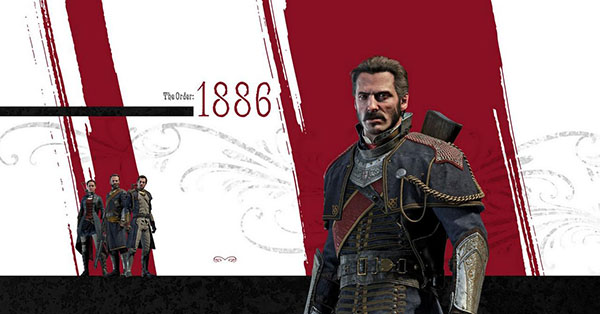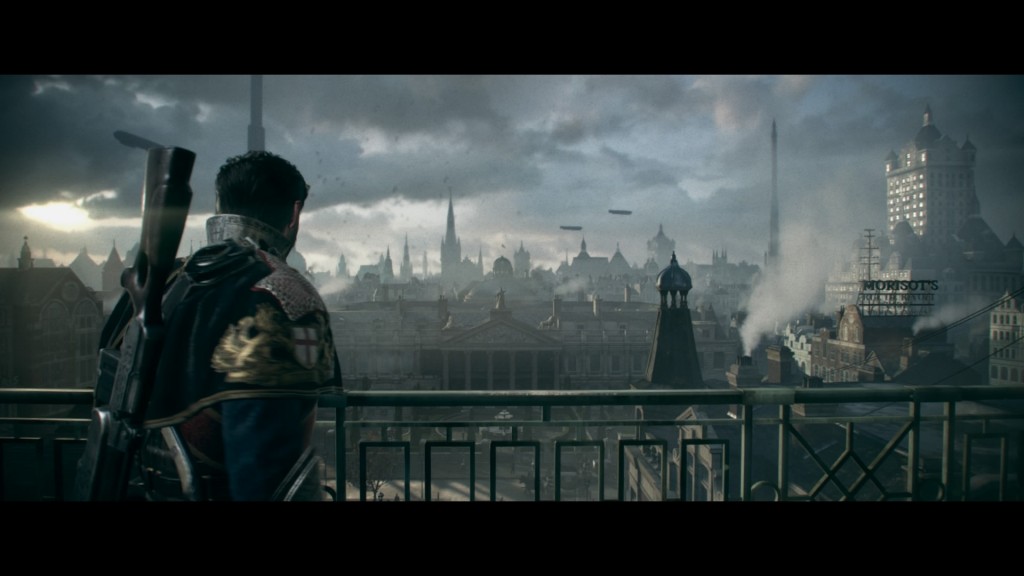The Order: 1886, created by Ready at Dawn has been facing harsh criticism for over two weeks now. The game was rumored to be incredibly buggy and short (About 5 hours), the latter of which would not have been an issue the game was not exclusively single-player. In addition, other reviews by notable organizations killed any of my hopes for this game. Needless to say there are no games out that I want to play since Evolve is repetitive as can be, so I decided to risk it and buy The Order: 1886. This led to mixed feelings.
The Order: 1886 takes place in an alternate version of London, England during a steampunk revision of the Industrial Revolution. Weapons and technology are far more advanced than what they were in the actual historical time period. Zeppelins and machine guns that look like the Lewis Machine gun are present in the game. This allowed the developers to be more creative when it came to the overall weaponry, story, and aesthetics of the game. Ultimately this leads to one of the pros of the game, the weapon variety. Guns that fire arcs of electricity, assault rifles with huge magazines, and automatic steampunk-esque pistols all have unique sound bits which are not merely cut and paste sound effects that one would find in Call of Duty or Battlefield. Each weapon looks carefully crafted, the mere attention to detail and creativity are noteworthy and enjoyable. My favorite weapon in the game uses thermite to engulf waves of enemies in an AOE like attack. And all of these weapons are crafted by this alternate history’s version of Nikola Tesla.
Visually speaking, The Order: 1886 is stunning. One could compare this game to the Xbox One’s Ryse: Son of Rome, since it showcases the early hardware capabilities of the PS4. I found the scenery and overall aesthetics of the developer’s version of London appealing to the eyes and incredibly detailed. The game transfers from cinematic cut scenes to gameplay seamlessly. The overall visual integrity, combined with the film like filter, truly made the game feel like a movie or an extravagant cinematic experience. Notice that in the picture above, there are black bars. These were added to give the game a widescreen aspect ration and, therefore, a more cinematic feel. At first, I was annoyed by this, but after the first hour of the game, I had grown relatively used to it. Furthermore, I would like to see more story driven games attempt to replicate this visual design as it appeals to the eyes far better and allows better visuals by the decreased resolution.
If I were to stop writing about this game now, it may seem as if it was a decent game, but The Order: 1886 suffers from two major problems: the game’s length and the lack of variety in the gameplay. I beat the game in one 4 1/2 hour-long sitting and was impressed by the visuals of the game, butI felt cheated out by its abrupt ending and obvious hook for another game. Not to mention that for $60 I would normally expect to get at least 8-10 hours out of a single-player only game. The Order: 1886 has a cool and unique story of monster hunters who fight half breeds, and the steam punk London is great and all, but it does not justify the price tag. If the game had a 30$ price tag, it probably would have seemed more reasonable. But the developers did succeed in making me want more. The game literally ends with a gunshot transition fade to black, followed by a cut scene after the credits. I, myself, as a gamer wanted more. For how much it costs, I deserved more as does every other person who bought this title.
Gameplay was the other challenge this game faced. Early reviews claimed that the game was riddled with hundred of quick time events, moments and actions in game that are accomplished by the simple press of a button. I found this statement to be untrue. It had just as many in game prompts as any Batman or Uncharted game. So people who dislike this game purely because of that are too narrow-minded to acknowledge that the amount of quick time events in The Order:1886 are negligible when compared to other triple A titles. What made gameplay suffer in The Order: 1886 was the lack of freedom, aided by its generic shooter gallery combat. The whole game is essentially an on-rails shooter where you go from point A to B and kill all rebels and half breeds alike. It lacks the variety that many other shooters have. The weapons, as stated earlier, are fun, but I felt as if you only got to use the really cool ones for a limited amount of time. For example, halfway through the story you recover an amazing railgun-like weapon during a sequence where you take on waves of rebels. The gun performed phenomenally, but after that sequence was over the gun is never seen again. Enemy variety was limited. I mowed down dozens of them without difficulty. They felt too easy and lacked proper armament to fight the well equipped player character. The half breeds on the other hand were enjoyable to fight. Being hunted and having to hide in a corner while lycans circled around you was executed perfectly, but it grew repetitive the further you got into the game. The two boss fights in the game were exact copies of each other that happened during very different segments of the game. This felt out of place and unneeded since they were both glorified quick time events. Overall, the gameplay for this game was not very memorable, but it looked visually amazing and had a lot going for it.
Verdict: 6.2 The Order: 1886 is a new promising IP by Ready at Dawn, but it was poorly executed when it came to its length and gameplay variety. It is also impossible to defend the 60$ price tag. I do however recommend it if you want to play a unique story, but please buy this game when its on sale or used, DO NOT BUY IT NEW!










